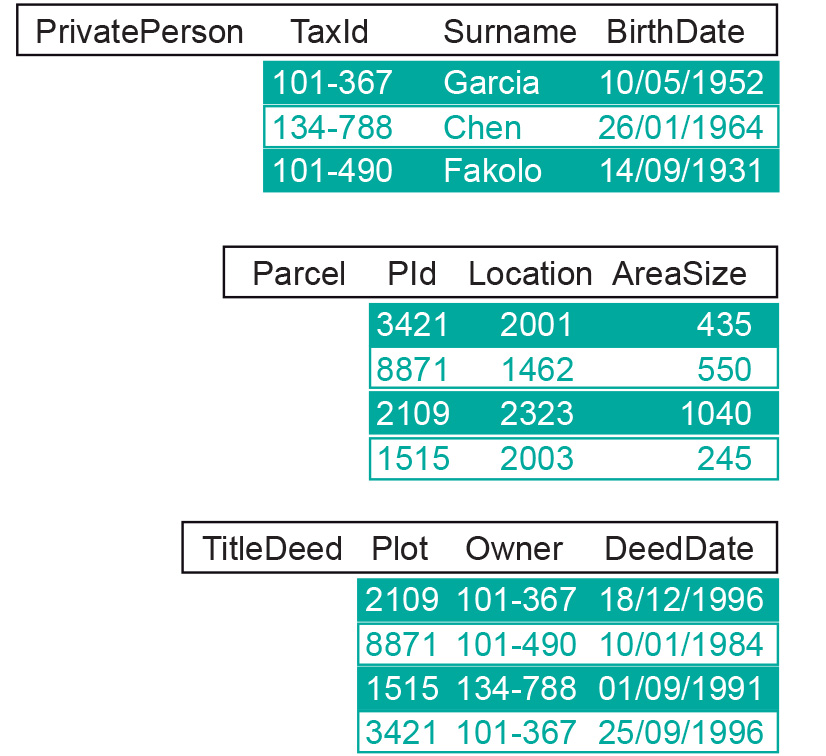Relation
Introduction
In relational data models, a database is viewed as a collection of relations, also commonly referred to as tables. A table or relation is itself a collection of tuples (or records). In fact, each table is a collection of tuples that are similarly shaped. By this, we mean that a tuple has a fixed number of named fields (also known as attributes).
Examples

Learning outcomes
-
5 - Data management: relational database and DBMS
Describe and explain the structure and components of a relational data model and a relational database (level 1 and 2). Describe and explain what a Database Management System (DBMS) is and how it links to a GIS.
-
6 - Data retrieval and queries
Explain the basic concepts of data retrieval (attribute and spatial queries) and formulate queries to make a selection on attributes and geospatial data from a spatial database.
Outgoing relations
- Relation is based on Data attribute
Incoming relations
- Join is based on Relation
- Relational database is based on Relation
- Tuple is part of Relation